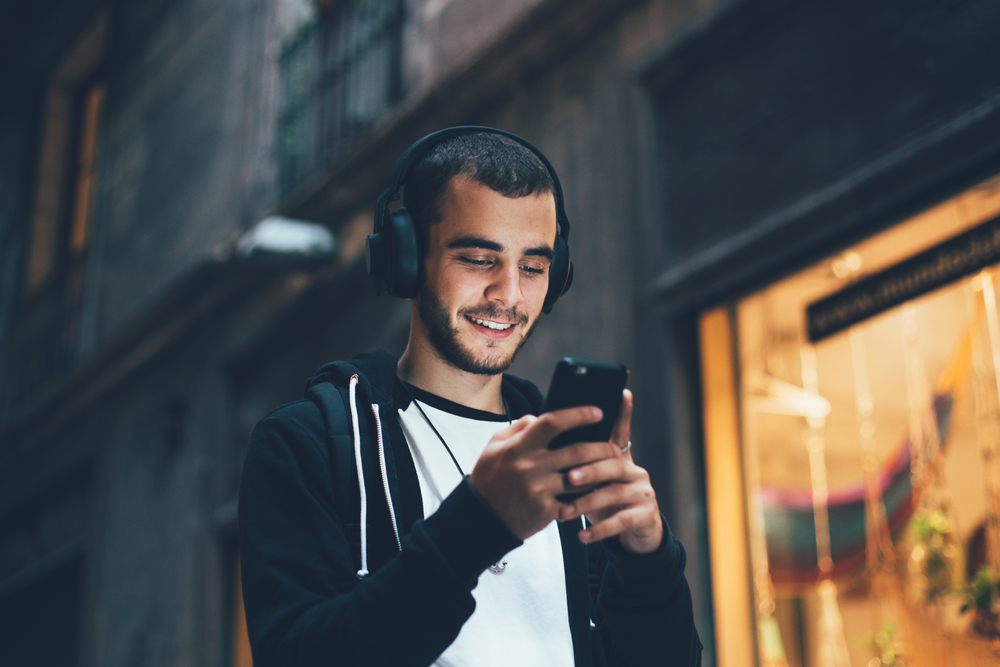
Say hello to James, a passionate music fan who perfectly incorporates Spotify into his work regimen, switches over to Pandora during his workouts, and curates playlists for every instance imaginable, from cardio sessions to cooking and even gaming. He’s rarely seen without his headphones, which have become an important part of his day-to-day life, turning every moment into an individualized audio experience. James takes comfort and delight in the engaging world of music, but the very source of his joy may be harming his cherished ability to hear without him recognizing it.
Regarding our ears, there are both safe and dangerous ways to indulge in music. Unfortunately, a lot of us lean towards the second approach.
How does lengthy periods of music exposure result in hearing loss?
As time pass, loud noises can lead to deterioration of your hearing abilities. Hearing loss is typically connected to getting older, but the latest studies suggest that it is mainly triggered by damage from exposure to loud sounds instead of being a normal part of aging.
It also appears that younger ears are particularly vulnerable to noise-related damage (they’re still developing, after all). And yet, young adults are more likely to be dismissive of the permanent perils of high volume. So there’s an epidemic of younger individuals with hearing loss, thanks, in part, to widespread high-volume headphone usage.
Is it possible to enjoy music safely?
Listening to music at full blast without any limitations is the most dangerous strategy. There is a way to enjoy to music more safely, which usually means decreasing the volume. The recommended safe volume levels are normally as follows:
- Adults should limit their device listening time to 40 hours or less and make sure the volume remains under 80 dB.
- If you’re under 18, 40 hours is still fine, just be certain to keep the volume at a safe level, 75 decibels or less.
Breaking it down, you’re looking at roughly 5 hours and 40 minutes of listening every day. That seems like a lot, but it can go by rather quickly. Despite this, the majority of individuals possess a well-developed awareness of time management, a skill that is generally mastered during early childhood.
The more challenging part is keeping track of your volume. On the majority of smart devices, computers, and televisions, volume is not computed in decibels. It’s measured on some arbitrary scale. The range could be as broad as 1 to 100, or it might be as narrow as 1 to 16. You may be unaware of the maximum volume capacity of your device or how near you are to reaching that limit.
Tips for efficiently keeping track of your music volume
To address this problem, numerous free noise tracking apps are available for both iPhone and Android devices. These apps provide immediate feedback on surrounding noise levels, helping users to adjust their listening volume to safe levels.
Because of this, many audiologists suggest using one of the numerous noise level monitoring applications available at no cost. These apps– extensively available for both iPhone and Android devices– will give you real-time readouts on the noises around you. That way, you can keep track of the dB level of your music in real time and make adjustments.
A volume comparison: garbage disposals and more
As illustration, 80 dB is approximately comparable to the noise produced by a typical garbage disposal or dishwasher– audible, yet not excessively loud. Identifying this volume level is significant because it denotes the point at which hearing loss becomes a real and tangible concern.
So, being extra vigilant when surpassing this decibel threshold is essential. Consider decreasing your exposure to extremely loud music by listening to specific songs at the highest volume rather than listening to entire albums.
Recurring exposure to elevated volume levels can result in hearing problems such as tinnitus and eventual hearing loss. By being cognizant of when our ears venture into the danger zone, we enable ourselves to make educated choices, with the ultimate goal of promoting safer listening practices.
Set up an appointment for a hearing evaluation
For better prioritization of your hearing health, it is advisable to contact a hearing specialist to schedule a comprehensive hearing exam. Taking proactive steps like consistent assessments can identify possible issues at an early stage, enabling prompt actions and tailored advice to protect your valuable hearing.